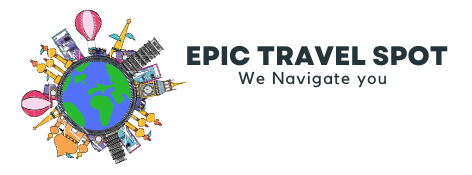Understanding Digital Detox
Nowadays, people keep receiving messages and notifications due to the speed at which information about various events transmits within the contemporary world. They are as much a part of us now as any other technological appendage – our only relief being that we still do not have smartphones grafted to our hands. This constant connectivity as a result yields stress, anxiety and low productivity that is usual in any working environment.
Digital detoxing refers to a specific duration within which people limit their use of technology for the overall benefit of their welfare. This way people can decrease stress levels, get better sleep and improve their most important relationships: with friends and families.
That brings me to my next question to which there shouldn’t be a clear answer, why perform a digital detox?
- Mental Health Benefits: Rapid vested Ness in the technology also has negative impacts such as increase levels of stress, anxiety, and depression. These mental health issues can be eased if you take a digital detox because our minds are overwhelmed with too much information.
- Physical Health Benefits: Here we can also list the physical consequences of spending long hours in front of the – eye strain, headaches, and poor posture. To avoid such risks, we should minimize use of technology by taking frequent breaks for a while then continue.
- Improved Productivity: Incredibly, avoiding technology in the course of a day can help make a person more productive overall. If there are many notifications and we spend much time in social networks, it almost becomes impossible to concentrate. This is especially because one can be as productive in a week without a computer as one can be in a month depending on how efficient their working habit is, therefore a digital detox can help one to recharge and come back to work efficiently.
- Strengthened Relationships: Today people can be extremely dependent on their gadgets to keep themselves in touch with One. But closed communication must be acknowledged as inapplicable to live communication, and the latter cannot be replaced by the former in any way. It also can make us spend more time with families and friends due to the time that was spent to use social media is eliminated.

Digital Detox
How to Start Your Digital Detox
Setting Clear Goals
According to it, people need to remember that the first stage of any successful digital detox is to set goals. Describe the specific aspects of your life which make you the most uncomfortable with the existence of technology. Have you become one of the people who checks the phone every few minutes or seconds to see a notification? Do you waste your time using social networks?
Once you have pinpointed these areas, you can create particular objectives on how to minimize time spent on screen.
- Avoid spending more than 2 hours of your time using the phone.
- Use no social media for a week.
- Disable everything that comes with the notification, excluding those for quick access applications. Set clear goals.
Identify the areas of your life where you feel most overwhelmed by technology. Are you constantly checking your phone for notifications? Do you spend hours scrolling through social media? Once you’ve identified these areas, you can set specific goals to reduce your screen time.
For example, you might aim to:
- Limit your phone usage to two hours per day.
- Avoid using social media for one week.
- Turn off notifications for all non-essential apps.
Creating a Detox Plan
After identifying your goals it’s time to design a detox program. The writing should be specific to describe exactly what actions you will have to make to achieve the laid down objectives. Here are a few tips:
- Choose a suitable timeframe: That brings us to the final important decision: how long do you want to detox your body? It could be anything – a weekend, a week or even a month.
- Identify digital activities to reduce or eliminate: Identify which of the used apps or activities are taking much of your time and energy.
- Create a schedule for detox activities: Schedule what you are going to do to avoid being idle during detox, including reading, exercising, or going outside into the nature.
Preparing Your Environment
It’s clear that before the start of the experiment, it is necessary to prepare the environment for the said digital detox. Here are a few tips:
- Disable notifications: Switch off all notification for applications and services not critical to one’s work.
- Turn off unnecessary devices: When undertaking a detox, try and switch off your computer, your tablet or your television set.
- Create a dedicated detox space: Select a very quiet area where you can sit down and do away with all the rushing around that you possibly can.
In this way, the plan that you have been provided will help you to create a completely unique plan for your digital detox.

Digital Detox
Tips for a Successful Digital Detox
Mindful Technology Use
Now, I am going to give some helpful advises on how to continue having healthy and normal relation with the various kinds of technologies.
Here are a few tips for mindful technology use:
- Set screen time limits: Employ some of your device applications or install third-party applications to reduce how long you spend on your device.
- Use apps to track digital habits: In fact, there are plenty of apps that you should consider downloading to your smartphone that can analyze your usage of your phone and suggest for you improvements.
- Practice digital mindfulness: Be aware of how you feel when you utilize technology. If you are bothered, you should stop working.
When people spend a large amount of time on the Internet and start using this tool to perform various operations, they need some extra work that can be done offline.
To get the most out of digital detoxing, you have to replace your mobile screen time with other activities.
Here are a few ideas:
- Rediscover hobbies and interests: Start making art, write a letter, knit, draw, paint or go back to a hobby you previously enjoyed.
- Spend time in nature: Play some sport, ride a bike, go for a walk, or just sit on your porch and breathe the fresh air.
- Connect with loved ones: Share some time with friends and relatives.
Managing Digital Overload
In the modern world of advanced technologies, everybody might experience stress while working with numerous materials. Here are a few tips for managing digital overload:
- Declutter digital spaces: Unsubscribe from unwanted newsletters, emails, and programs, uninstall unneeded applications and remove those files you no longer need.
- Unsubscribe from unnecessary emails and notifications: Receive only the email(s) that you feel are worth receiving in the first place.
- Practice digital minimalism: The best way possible is always to consider what is important and ignore the rest.
It is only possible to maintain the life between your interaction with social networks and the physical world by using the tips outlined above.
Overcoming Challenges and Staying Connected
Dealing with Withdrawal Symptoms
Following are some of the rebound effects that new users of digital detox are likely to experience: nervousness, irritability, and even dullness. Such are symptoms and they fade away within the course of some time. To manage these symptoms, try the following:
- Understand the withdrawal process: The author gives one piece of advice for the next day, asserting that it is okay to be impatient with one’s self and to need some time to get used to a new set of habits.
- Cope with anxiety and boredom: Do things that interest you and everyone would be delighted to do such as reading, writing, doing things in nature.
The existing ‘New Media’ connections with people are equal to or exceed the quality of real-world connections with others.
This helps your account to be more real rather than being stuck with only professional or online friends. Here are a few tips:
- Set boundaries for technology use: Set aside particular hours in the day to attend to phone call or browsing the social media accounts.
- Prioritize face-to-face interactions: Try to meet friends and families face to face for some quantity time.
- Use technology mindfully: Third, when you do decide to deploy the technology, you need to do so deliberately.
Following these tips one can avail the positive impacts of digital detoxing resolution in a way not having to disconnect the world fully.
Long-Term Benefits of Digital Detox
This is because, regular digital free periods, should be scheduled to improve the general well-being of an individual. Here are some of the long-term benefits:
- Improved mental health and well-being: Lower stress level, anxiety, and depression.
- Increased productivity and focus: To do this, have improved concentration, and also longer attention span.
- Stronger relationships: Emotional interdependence with people close to us.
- Enhanced creativity and problem-solving skills: Preparing a well-planned image that doesn’t require as much time and actual energy to implement.
With this, it is evident that involving your life with digital detoxing will only bring new life to your life and enhance your moving experience.
Remember: Digital detoxification is not a call for you to deny yourself the use of the devices, rather, it’s a call to a more conscious or deliberate use of the devices. Just like you are able to differentiate between the virtual and real life connections it is also possible to create a healthy balance between virtual and real interaction.

Digital Detox
Conclusion
Take a break and smell the roses; in today’s many people feel so connected to their devices it is almost as if they are slaves to their phones. When started following the principles of digital detoxes in every day use, it is possible to enhance the quality of life, work on mental and physical health, and even appreciate the values of relationships.
Just in case, let’s be clear that no one is suggesting that it is possible or even desirable to avoid technology altogether in this process. So, with setting boundaries, being digitally mindful, or doing other activities offline you can easily achieve a better life style.
So, why not give it a try? Maybe it is time for you to embark on a digital detox to resolve to one and have fun whilst at it offline.
References
- American Psychological Association (APA):https://www.apa.org/
- National Institute of Mental Health (NIMH):https://www.nimh.nih.gov/
- World Health Organization (WHO):https://www.who.int/
By incorporating these references, you can enhance the credibility and authority of your blog post.




